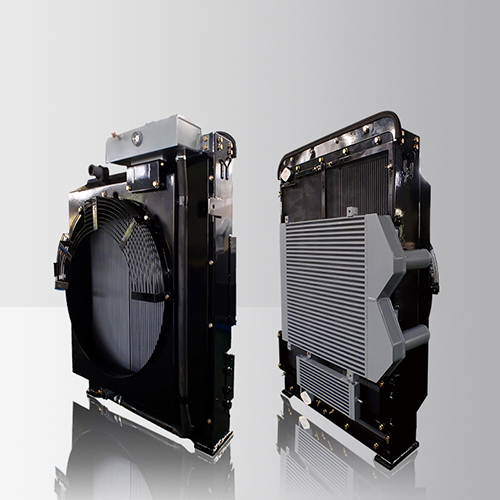A few days ago, the National Highway Traffic Safety Administration (NHTSA) of the United States announced that it would postpone the issuance of a warning system for electric vehicles. With the continuous development of electric vehicle technology and hybrid vehicle technology, more and more electric vehicles and hybrid vehicles have begun to be applied to real life. One of the major advantages of electric cars and hybrid cars is that they produce very low noise during driving and can basically achieve quiet driving. The characteristics of electric vehicles are both advantages and disadvantages. At present, relevant regulatory authorities have stated that silent driving conditions may make vehicles unable to attract pedestrians when approaching pedestrians, thus creating potential danger to pedestrians. In response to the problem, a solution for arranging sound generators for electric vehicles is currently proposed on the market. Its purpose is to make the vehicle alert to pedestrians when approaching a pedestrian. Through the unremitting efforts of the All-China Federation of Industry and Commerce on the issue of blindness, the United States formally signed the Pedestrian Security Enhancement Act as a legal provision in 2011. Although the time for legislation was very timely, the specific implementation process of the bill was a series of twists and turns. As far as the current news is concerned, the US National Highway Traffic Safety Administration has announced that it will make a final decision on the sound generator proposal by the end of this year. This means that the implementation of the bill will begin as early as 2018. It has been 15 years since the introduction of hybrid vehicles for the first time in the American automobile market. The controversy over hybrid vehicles has continued since then, and the delay of this security bill has further intensified the issue of hybrid vehicles. discussion. The federal government stated that with the introduction of electric vehicles and hybrid cars, neither of them will produce the sound of the engine of a conventional internal combustion engine car during driving, which means that people will not be able to judge whether there is a vehicle approaching the sound or not. This will be potentially dangerous to blind or visually impaired people. NHTSA countermeasures In response to the above issues, the National Highway Traffic Safety Administration of the United States held a research meeting in 2008, followed by two follow-up studies. In a 2009 study, it was found that hybrid cars and electric cars have twice the probability of a pedestrian collision accident than the conventional internal combustion engine cars. In a study launched by the National Highway Traffic Safety Administration in 2011, the probability of a pedestrian collision between a hybrid car and an electric car was 35% higher than that of a conventional internal combustion engine car. However, the main problem with the research is that there is a problem of incomplete sampling in both research data. In the 2009 study, only the data from 12 states were included. At the same time, the sample data only used pedestrian collisions after 2000. In 2000, the number of hybrid vehicles on the market was very small, and it was far from the current The first electric car was listed for about 10 years, which means that the research data did not consider the electric car to be considered at all. Although there are still many doubts about the confirmation of the issue, the Pedestrian Safety Enhancement Act has been signed into a legal provision. At the same time, the National Highway Traffic Safety Administration of the United States has been working hard to promote it. The U.S. National Highway Traffic Safety Administration also stated that for those internal-combustion-engine cars that have extremely low noise during driving, they also need to have some sound generators. The application of sound generators will no longer be limited to electric cars and hybrid cars. There is a problem of excessive noise in the sound emitted by sound generators that are criticized by automobile manufacturers for management regulations. In addition, some electric car and hybrid car owners also expressed opposition to the application of sound generators because they believe that a quiet driving process is a driving enjoyment. Although there are various problems with regulations, many electric car manufacturers have also introduced sound generators as standard equipment for their vehicles in order to meet regulatory requirements. The Nissan Leaf is equipped with an automatic beeper that automatically triggers the beeper when the vehicle speed is less than 18 mph. The Chevrolet Volenda and Spark EV are equipped with actively controlled sound generators that the driver can trigger on demand. There are also some automakers who are waiting for the Pedestrian Safety Enhancement Act to equip their vehicles with sound generators. However, in view of the current situation, the entry into force of the bill will still take a long time. Combined bar plate(plate-fin) heat exchanger is ZHCOOLER focus for many years of continuous design research and development of important projects
Optional different fin type
Combined Heat Exchanger,Gas Water Heater Heat Exchanger,Air To Air Heat Exchanger,Oil To Water Heat Exchanger Xinxiang Zhenhua Radiator Co., Ltd. , http://www.thermictransfer.com
ThermicTransfer can be in accordance with the requirements of any parameters, customized best suited to your heat transfer solution
Such as heat source, heat transfer, temperature, heat transfer medium temperature, space size, inlet and outlet temperature, parameters of any engine
Any heat source need to change the place we can solve it
According to a little parameter, ThermicTransfer can simulation design high quality products that you need, we can provide free 3D and graphic drawings, convenient you confirm all the details
